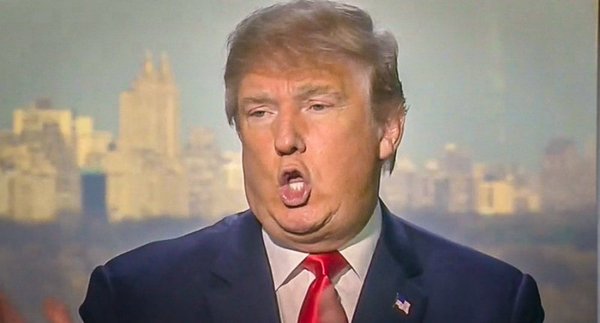Trump has another brilliant idea for juicing up the economy. You will never guess what it is.
He wants to cut the capital gains tax. Yeah, he came out with that today. I’m serious.
He said today he is also “looking at” a lot of tax cuts, including expanding the tax cuts that already have been cut, and a middle-class tax cut. No specifics. But since all of this would have to originate in the House, it ain’t gonna happen, anyway. Trump doesn’t seem to know that, but it ain’t.
Trump’s twitter feed today is full of tweets like this:
I am sending $15M from @USDOT to beautiful North Dakota! This federal funding will support bus service for people from Bismarck to Grand Forks and several other areas statewide. Congratulations!
— Donald J. Trump (@realDonaldTrump) August 12, 2020
Similar congratulations are aimed at several other states — Colorado, Texas, Wisconsin, Florida, Georgia, Michigan, North Carolina, New Hampshire, Pennsylvania, Illinois, Louisiana, New Jersey, Utah, Nebraska, Alabama, Oklahoma. I get the impression Trump discovered some money he had the disgression to disburse without congressional permission. Improved bus service on the way, folks. Just the thing during a pandemic! This seems to not have been on anyone’s radar. And aren’t most of those states either conservative or swing states? Hmm.
We’re now had a few days to digest the Great Signing of four memoranda and one executive order that was supposed to fix everything. Where are we with that?
Let’s start with the $400 supplement for unemployment benefits. I direct you to this article in Forbes by Shahar Ziv. Here’s what he says:
Of that benefit, $300 is supposed to come from the Department of Homeland Security’s Disaster Relief Fund (DRF). States have to add $100, supposedly from their allocation of the Coronavirus Relief Fund (CRF). But the states are saying that they don’t have that money any more. All the CRF funds are allocated, earmarked, or spent. Not all have weighted in, but I have yet to hear of one state saying yeah, we can do that. So according to the current terms, nobody gets any money. Mnuchin has hinted that Trump could waive the requirement for states to put in $100, but Trump himself hasn’t addressed that.
Further, the DRF funds probably won’t last long even if allocated. According to Ziv:
Trump’s order looks to leverage money in Homeland Security’s Disaster Relief Fund, which currently has $70 billion available. His action states that the increased benefits will be available “for eligible claimants until the balance of the DRF reaches $25 billion or for weeks of unemployment ending not later than December 6, 2020, whichever occurs first, at which time the lost wages assistance program shall terminate.”
According to expert estimates, the money in the DRF may only last four to five weeks before expiring, a far cry from the December 6, 2020 date in Trump’s executive order. At that time, the White House would probably need to look to Congress and legislative action to continue benefits.
There are also legal questions about whether Trump can allocate the DRF money as he intends. Legal experts are not all in agreement, but a big chunk of them think the whole plan is illegal. However, I doubt anyone will bother to challenge it in court, because it probably won’t happen anyway.
Going back to the desperate situation of the states, get this:
Senate Majority Leader Mitch McConnell’s refusal to provide coronavirus relief to cities and states facing massive budget shortfalls due to the pandemic could deal a devastating blow to the economic recovery, leading to millions of job losses.
Moody’s Analytics told the Wall Street Journal on Wednesday that if Congress does not agree to give more aid to cities and states, the economy would contract by 3% and more than 4 million jobs could be lost.
The ball is in your court, Mitch.
Then there is the payroll tax deferment. Joseph Zeballos-Roig at Business Insider writes that it’s possible few workers will see any extra money in their paychecks, because it’s likely a lot of employers will hang on to that money so that they can pay it back to the IRS when the deferment period ends. And, of course, the deferment isn’t going to people who aren’t getting paychecks.
The remaining memorandum defers student loan payments from October 1 to the end of the year. There are many complaints that isn’t enough. And the one and only actual executive order doesn’t do anything. It merely directs HHS Secretary Alex Azar and CDC Director Robert Redfield to “consider” whether there should be a continued ban on evictions from properties with federally backed mortgages, and if so, how such a ban would work. Don’t hold your breath, in other words.

